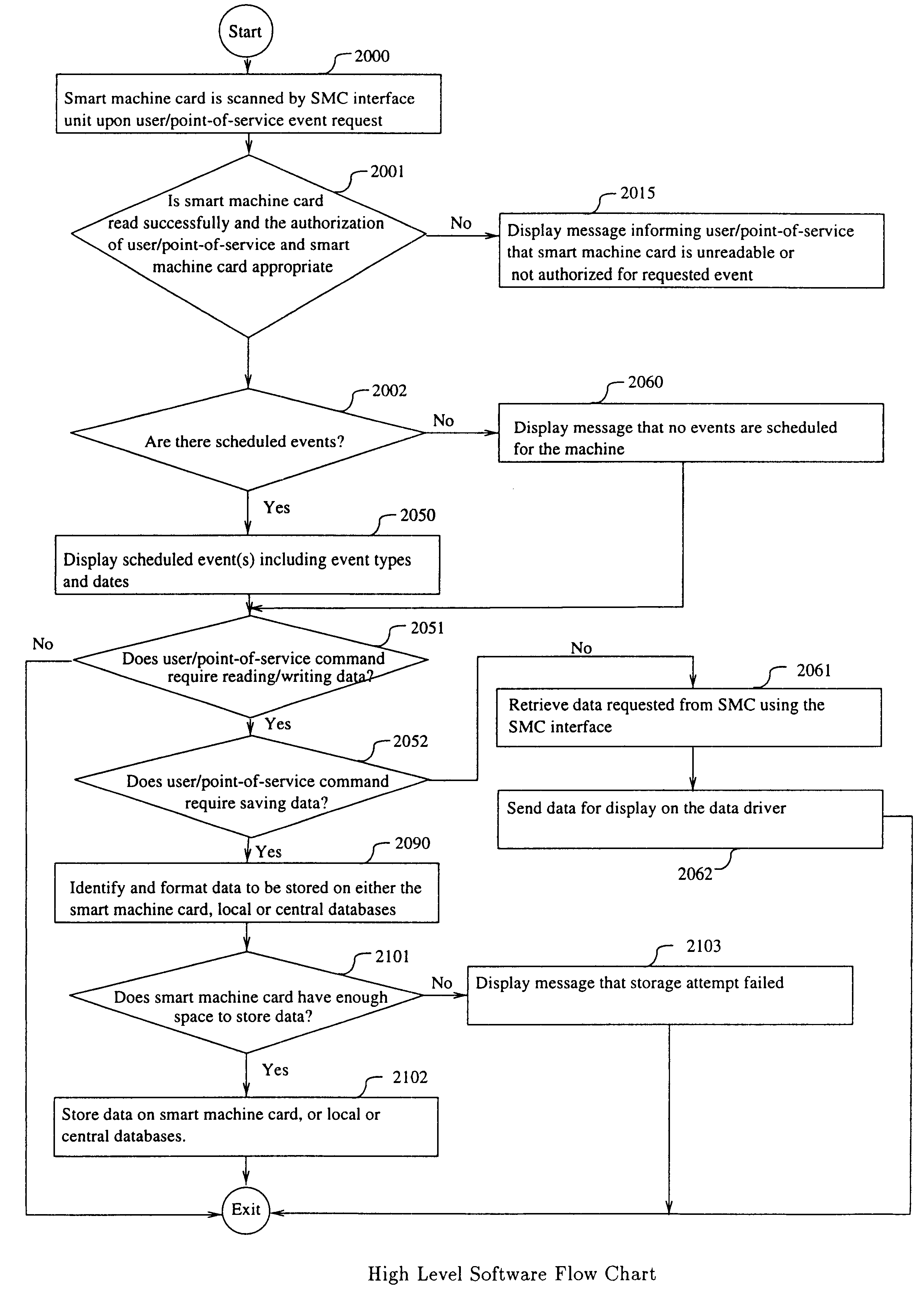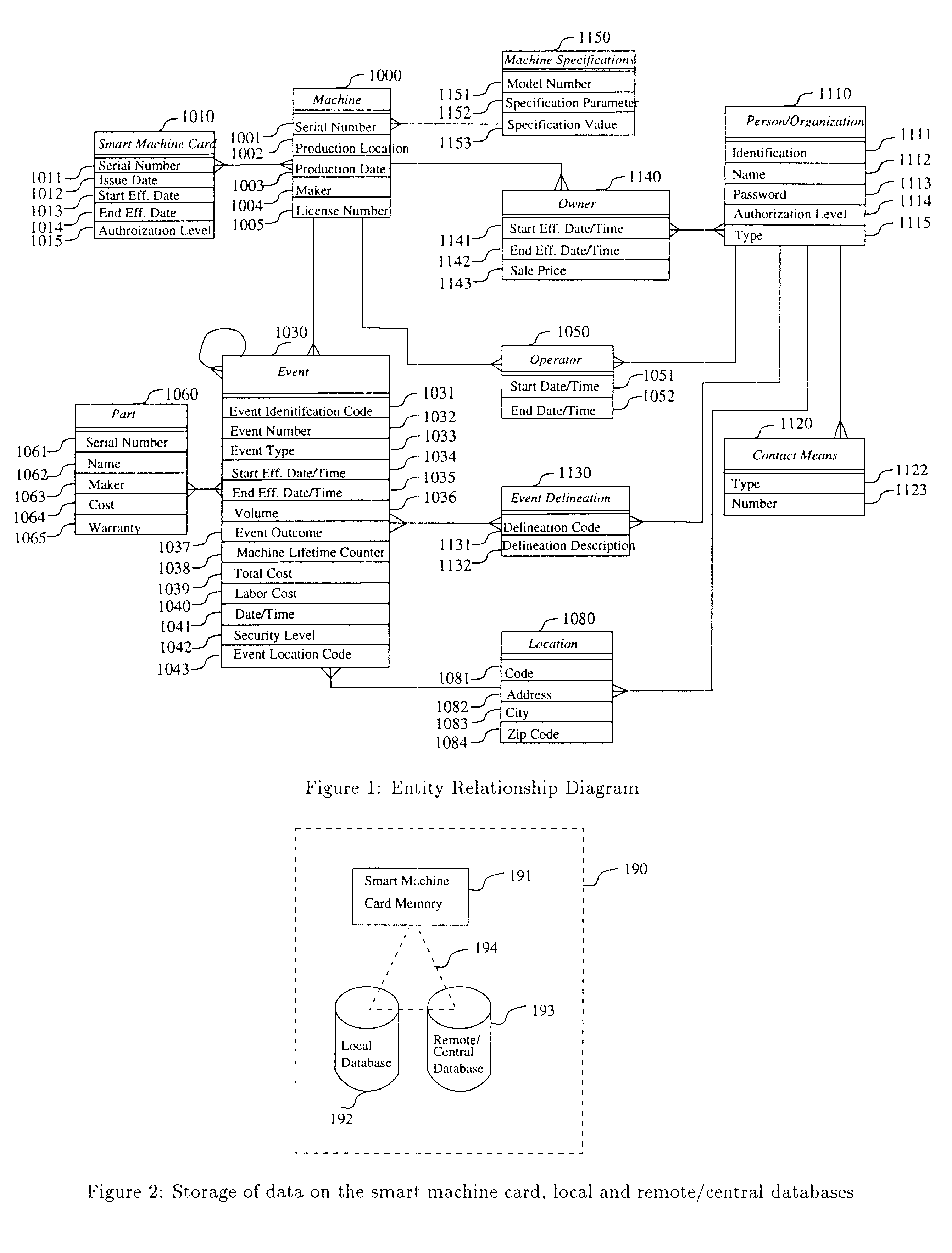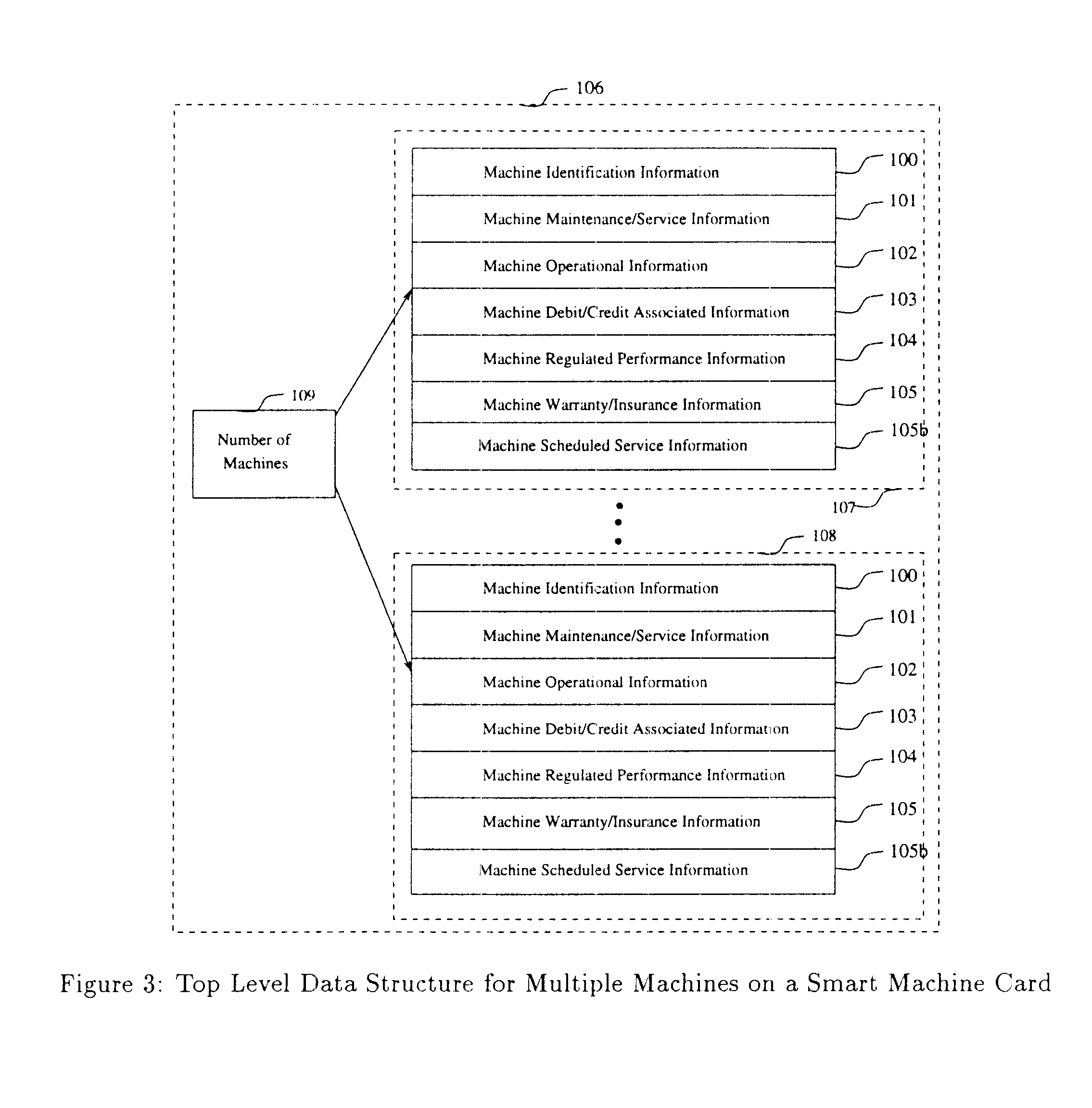Smart card for recording identification, and operational, service and maintenance transactions
a technology of identification and smart cards, applied in the field of smart cards, can solve the problems of difficult to integrate records into the machine or its immediate operating environment, difficult to keep records and information retrieval of transactions involving the machine, and often subject to physical or electronic loss
- Summary
- Abstract
- Description
- Claims
- Application Information
AI Technical Summary
Problems solved by technology
Method used
Image
Examples
Embodiment Construction
Smart Card in Relation to High Level System
In this section the logical representation of information related to the operation of the smart machine card is described.
The Entity Relationship Diagram (ERD) in FIG. 1 describes the data interactions of the smart machine card. A special notation is employed in this diagram. Boxes in the ERD represent entities / objects of importance to the implementation of the smart machine card environment. The properties of those objects are called attributes and are represented inside each box. The lines connecting the boxes represent relationships between those objects. The relationships are of three types: one-to-one, one-to-many, and many-to-many. A one-to-one relationship is represented by a straight line. The "many" side of the relationship is represented by a fork shape at the end of the line connecting the objects. The name of the relationship changes depending on the direction from which the relationship is read. Therefore for each line there sh...
PUM
 Login to View More
Login to View More Abstract
Description
Claims
Application Information
 Login to View More
Login to View More - R&D
- Intellectual Property
- Life Sciences
- Materials
- Tech Scout
- Unparalleled Data Quality
- Higher Quality Content
- 60% Fewer Hallucinations
Browse by: Latest US Patents, China's latest patents, Technical Efficacy Thesaurus, Application Domain, Technology Topic, Popular Technical Reports.
© 2025 PatSnap. All rights reserved.Legal|Privacy policy|Modern Slavery Act Transparency Statement|Sitemap|About US| Contact US: help@patsnap.com



